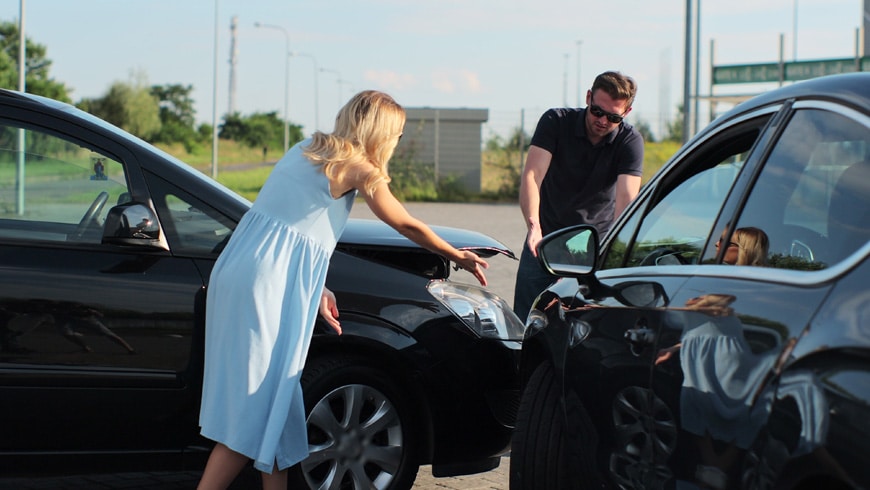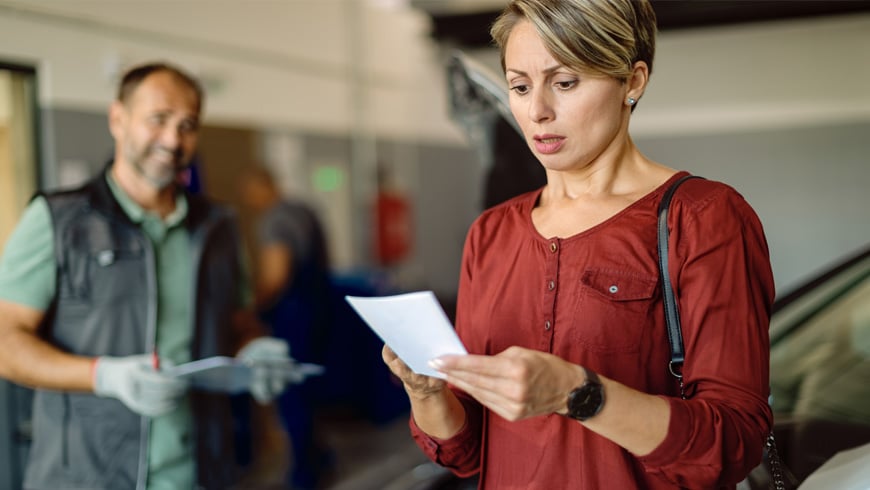Here’s a scenario: You’re driving home from your local grocery store after making a quick trip to buy a few things for dinner. As you sit at a red light, you glance in the rearview mirror just before the car behind you slams into your bumper.
Thankfully the driver was not going very fast and there are no injuries, but inspecting your bumper shows a significant amount of damage from the impact.
As you exchange information with the other driver, they admit they don’t have insurance.
What do you do now?
Understanding Uninsured Motorist Coverage
The first thing you will want to do is check your own policy. Do you have uninsured motorist coverage?
This invaluable protection can be a lifesaver in situations like these. It steps in when the at-fault driver lacks insurance, ensuring you’re not left holding the bag for repairs and medical bills.
Uninsured motorist coverage actually comes in two forms: Uninsured Motorist Bodily Injury (UMBI) and Uninsured Motorist Property Damage (UMPD).
Uninsured Motorist Bodily Injury (UMBI)
UMBI coverage steps in to protect you and your passengers if you’re injured by an uninsured driver. It typically covers:
- Medical expenses
- Lost wages
- Pain and suffering
If your policy includes UMBI coverage, it will have language similar to this:
We will pay compensatory damages which an “insured” is legally entitled to recover from the owner or operator of an “uninsured motor vehicle” because of “bodily injury”:
1. Sustained by an “insured”; and
2. Caused by an accident.The owner’s or operator’s liability for these damages must arise out of the ownership, maintenance or use of the “uninsured motor vehicle”.
Uninsured Motorist Property Damage (UMPD)
UMPD coverage, on the other hand, protects your vehicle and property. It typically covers:
- Repairs to your vehicle
- Replacement costs if your car is totaled
- Damage to other personal property
If your policy includes UMPD coverage, it will have language similar to this:
We will pay for direct and accidental loss to “your covered auto” or any “non-owned auto”, including their equipment, minus any applicable deductible shown in the Declarations, caused by an accident with an “uninsured motor vehicle”.
So UMBI covers injuries and UMPD covered damage to your vehicle, but what if you live in a state where Uninsured motorist coverage is not mandatory and your policy does not include this coverage?

When You Don’t Have Uninsured Motorist Coverage
At the time of this article, 22 states and the District of Columbia require uninsured motorist coverage. In the other 28 states, the coverage is optional.
So what if you opted to not purchase uninsured motorist coverage when you bought your policy? In these cases, your collision coverage might be your safety net.
Collision coverage is designed to pay for damage to your car regardless of who’s at fault.
If you’re hit by an uninsured driver and don’t have UMPD, you can file a claim under your collision coverage.
Here’s the catch: collision coverage typically comes with a higher deductible, and using it may impact your future premiums.
Car insurance companies tend to get a little finicky when you file a collision claim, and your company may raise your rates if you file a claim, even if the accident was not your fault.
Here’s the language in your policy (or very similar) that describes your company’s obligation under collision coverage:
We will pay for direct and accidental loss to “your covered auto” or any “non-owned auto”, including their equipment, minus any applicable deductible shown in the Declarations, caused by:
1. Collision; or
2. Any form of loss other than collision.
Remember, while collision coverage can help in these situations, it’s not a perfect substitute for UMPD. It’s generally more expensive to use and doesn’t provide the same level of protection against uninsured drivers.
That’s why it’s crucial to understand your policy and consider adding uninsured motorist coverage if you don’t already have it.
It could save you from significant out-of-pocket expenses if you’re unfortunate enough to be hit by an uninsured driver.

When Damages Exceed Your Policy Limits
Sometimes, the costs associated with an accident can surpass your insurance coverage limits. This situation can be particularly challenging when dealing with an uninsured driver. Let’s explore your options and considerations in such cases.
Understanding Policy Limits
First, it’s crucial to understand your policy limits. These are the maximum amounts your insurance company will pay for a covered loss. For example, you might have limits like:
- $25,000 per person for bodily injury
- $50,000 per accident for bodily injury
- $25,000 per accident for property damage
Once these limits are reached, you’re responsible for any remaining costs.
Options When Damages Exceed Limits
If your damages exceed these limits, you have several potential courses of action:
1. Legal Action Against the Uninsured Driver
You may consider suing the uninsured driver for the remaining damages. However, this option comes with significant caveats:
- If the driver couldn’t afford insurance, they may not have assets to cover your losses.
- Legal proceedings can be time-consuming and expensive.
- Even if you win a judgment, collecting the money can be challenging.
2. Umbrella Insurance
If you have an umbrella insurance policy, it might provide additional coverage beyond your auto policy limits. These policies typically offer $1 million or more in extra liability protection and may include coverage for uninsured motorist claims.
3. Your Own Health Insurance
For medical expenses that exceed your auto insurance limits, your health insurance may cover the remainder. However, be aware that your health insurer may seek reimbursement from any settlement you receive.
4. Underinsured Motorist Coverage
While this doesn’t apply to completely uninsured drivers, it’s worth mentioning. If the at-fault driver has some insurance but not enough to cover your damages, underinsured motorist coverage can help bridge the gap.
Prevention: Adequate Coverage Limits
The best way to protect yourself from exceeding policy limits is to ensure you have adequate coverage in the first place. Consider:
- Reviewing your policy limits regularly
- Increasing your uninsured motorist coverage limits
- Adding an umbrella policy for extra protection
Financial Responsibility Laws
It’s important to note that in some states, financial responsibility laws may require drivers to cover damages they cause, regardless of their insurance status. However, enforcing these laws against uninsured drivers can be challenging.
The Role of Your Insurance Company
If you find yourself in this situation, communicate openly with your insurance company. They can:
- Explain your coverage in detail
- Help you understand your options
- Potentially negotiate with medical providers on your behalf
Dealing with damages that exceed your policy limits can be stressful, especially when an uninsured driver is involved.
While there’s no perfect solution, understanding your options and having adequate coverage can help mitigate the financial impact.
 During his career as an independent insurance agent,
During his career as an independent insurance agent,